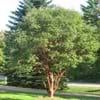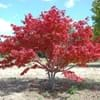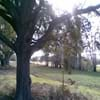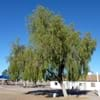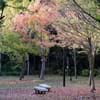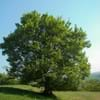What is
Life Span
Perennial
Annual
Type
Tree
Vegetable
Origin
Australia
Central America, South America
Types
Not Available
Bush Beans, Pole Beans
Number of Varieties
Not Available
2
99+
Habitat
Scrubs, tussock grasslands, Upland savannas
Cultivated Beds
USDA Hardiness Zone
10-11
Not Available
AHS Heat Zone
12-10
Not Available
Sunset Zone
8, 9, 12, 13, 14, 15, 16, 17, 18, 19, 20, 21, 22, 23, 24
A1, A2, A3, H1, H2, 1a, 1b, 2a, 2b, 3a, 3b, 4, 5, 6, 7, 8, 9, 10, 11, 12, 13, 14, 15, 16, 17, 18, 19, 20, 21, 22, 23, 24
Habit
Upright/Erect
Vining/Climbing
Information
Plant Size
Minimum Height
550.00 cm
99+
210.00 cm
99+
Minimum Width
370.00 cm
99+
60.00 cm
99+
Plant Color
Flower Color
Lemon yellow
Lavender
Flower Color Modifier
Bicolor
Bicolor
Fruit Color
Gray Green
Purple
Leaf Color in Spring
Blue Green
Green, Purple
Leaf Color in Summer
Blue Green
Green
Leaf Color in Fall
Blue Green
Green
Leaf Color in Winter
Blue Green
Not Available
Shape
Leaf Shape
Long Narrow
Oval
Thorns
No
No
Season
Plant Season
Spring
Spring, Summer, Fall
Growing Conditions
Sunlight
Full Sun
Full Sun
Growth Rate
Slow
Fast
Type of Soil
Loam, Sand
Loam, Sand
The pH of Soil
Acidic, Neutral, Alkaline
Neutral, Alkaline
Soil Drainage
Well drained
Well drained
Bloom Time
Spring, Late Winter
Indeterminate
Repeat Bloomer
No
Yes
Tolerances
Drought
Drought
Care
Where to Plant?
Ground
Container, Ground, Pot
How to Plant?
Seedlings
Seedlings
Plant Maintenance
Medium
Medium
Watering Plants
Watering Requirements
Do not water excessively
Do Not over Water, Requires regular watering, Water evenly
In Summer
Lots of watering
Lots of watering
In Spring
Moderate
Moderate
In Winter
Average Water
Average Water
Soil
Soil pH
Acidic, Neutral, Alkaline
Neutral, Alkaline
Soil Type
Loam, Sand
Loam, Sand
Soil Drainage Capacity
Well drained
Well drained
Sun Exposure
Full Sun
Full Sun
Pruning
Remove dead or diseased plant parts, Requires little pruning
Remove damaged leaves, Remove dead branches, Remove dead leaves
Fertilizers
All-Purpose Liquid Fertilizer, No fertilizers needed
5-10-10 fertilizer
Pests and Diseases
Insects, Root rot
Alternaria Leaf Spot, Anthracnose, Aphids, Armyworm, Bacterial Blight
Plant Tolerance
Drought
Drought
Facts
Flowers
Showy
Showy
Flower Petal Number
Single
Single
Fruits
Showy Fruit
No
Yes
Edible Fruit
No
Yes
Fragrance
Fragrant Flower
Yes
Yes
Fragrant Fruit
No
No
Fragrant Leaf
No
No
Fragrant Bark/Stem
No
No
Showy Foliage
No
No
Showy Bark
No
No
Foliage Texture
Fine
Coarse
Foliage Sheen
Matte
Matte
Evergreen
No
No
Invasive
No
No
Self-Sowing
Yes
Yes
Attracts
Butterflies
Not Available
Allergy
Asthma, Eye irritation, Headache, Nose Irritation, Throat itching, Vomiting
Not Available
Benefits
Uses
Aesthetic Uses
Showy Purposes
Not Available
Beauty Benefits
Not Available
Beautiful Skin
Edible Uses
Yes
Yes
Environmental Uses
Air purification, soil stabilisation
Fixes Nitrogen
Plant Benefits
Medicinal Uses
Not Available
Cancer, Diuretic, Homeopathy, Hypotensive, Miscellany
Part of Plant Used
Flowers, Sap, Seeds
Leaves, Seedpod, Seeds
Other Uses
Used as a dye, Wood is used fore making tools
Used for making brown dye, Used in biomass, Used in in reviving woollen fabrics
Used As Indoor Plant
No
Yes
Used As Outdoor Plant
Yes
Yes
Garden Design
Shade Trees, Street Trees
Container, Edible, Herb, Vegetable, Vine
Scientific Name
Botanical Name
ACACIA aneura
PHASEOLUS vulgaris 'Purple King'
Common Name
Mulga, True Mulga
String bean, Field bean, French bean
In Hindi
Mulga
String Bean
In German
Mulga
Bohne
In French
Mulga
Haricot vert
In Spanish
Mulga
String Bean
In Greek
mulga
Αμπελοφάσουλο
In Portuguese
Mulga
Feijão de corda
In Polish
Mulga
Fasolka szparagowa
In Latin
Mulga
Gloria Bean
Classification
Kingdom
Plantae
Plantae
Phylum
Magnoliophyta
Magnoliophyta
Class
Magnoliopsida
Magnoliopsida
Order
Fabales
Fabales
Family
Fabaceae
Fabaceae
Genus
Acacia
Phaseolus
Clade
Angiosperms, Eudicots, Rosids
Angiosperms, Eudicots, Rosids
Tribe
Not Available
Phaseoleae
Subfamily
Not Available
Faboideae
Number of Species
Not Available
Not Available
|
||
|
||
|




